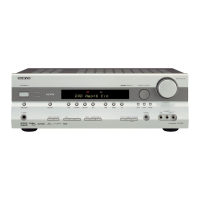
Do you have a question about the Onkyo HT-R508 and is the answer not in the manual?
| rated output power (FTC) | 110 watts |
|---|---|
| rated output power (IEC) | 5 ch × 130 W |
| maximum output power (JEITA) | 5 ch × 160 W |
| dynamic power (3Ω, 1 ch driven) | 210 W |
| dynamic power (4Ω, 1 ch driven) | 190 W |
| dynamic power (8Ω, 1 ch driven) | 130 W |
| total harmonic distortion (THD) | 0.08% |
| damping factor | 60 |
| input sensitivity and impedance | 200 mV/ 47 kΩ |
| output level and impedance | 200 mV/ 470 Ω |
| frequency response | 5 Hz–100 kHz |
| tone control (bass) | ±10 dB, 50 Hz |
| tone control (treble) | ±10 dB, 20 kHz |
| signal to noise ratio | 100 dB |
| speaker impedance | 8Ω–16Ω |
| input sensitivity/output level and impedance (component and s-video y) | 1 Vp-p /75Ω |
|---|---|
| input sensitivity/output level and impedance (component pb/cb, pr/cr) | 0.7 Vp-p /75Ω |
| input sensitivity/output level and impedance (s-video c) | 0.28 Vp-p /75Ω |
| input sensitivity/output level and impedance (composite) | 1 Vp-p /75Ω |
| component video frequency response | 5 Hz – 50 MHz |
| fm tuning frequency range | 87.5 MHz– 108.0 MHz |
|---|---|
| am tuning frequency range | 522 kHz–1611 kHz |
| radio presets | 40 |
| power supply | AC 230 V, 50 Hz |
|---|---|
| power consumption | 560 W |
| standby power consumption | 0.3 W |
| dimensions (W × H × D) | 435 × 150 × 377 mm |
| weight | 10.2 kg |
Explains how to select modes and operate various components with the remote.
Details the function of each button on the remote for different inputs.
How to power the AV receiver on, put it in standby, and turn it off.
Provides a quick guide to essential first-time setup procedures.
Guides through the automatic speaker calibration process using the setup microphone.
Step-by-step instructions for performing the automatic speaker setup procedure.
Explains common error messages during speaker setup and how to resolve them.
How to assign HDMI inputs to input selectors for proper source recognition.
How to configure digital audio inputs for optimal sound.
Step-by-step guide to selecting sources, playing content, and adjusting volume.
Guides on tuning into AM and FM radio stations using auto or manual modes.
Guides on how to select various listening modes via the receiver or remote.
Explains modes to soften sound, reduce dynamic range, and adjust audio parameters.
How to record audio from selected sources to a connected component.
How to specify connected speakers, their sizes, and initial configurations.
Adjusting crossover points and enabling Double Bass for enhanced low frequencies.
How to manually set the distance of each speaker from the listening position.
Adjusting individual speaker volume levels for balanced sound output.
Fine-tuning the tone of individual speakers across different frequencies.
Managing digital input formats and correcting audio/video sync issues.
Procedures for entering remote control codes to operate other AV components.
Solutions for power issues, no sound, quiet audio, and muting problems.
Addresses problems with speaker sound, signal formats, volume, and noise.
Solutions for remote control malfunctions and recording problems.
